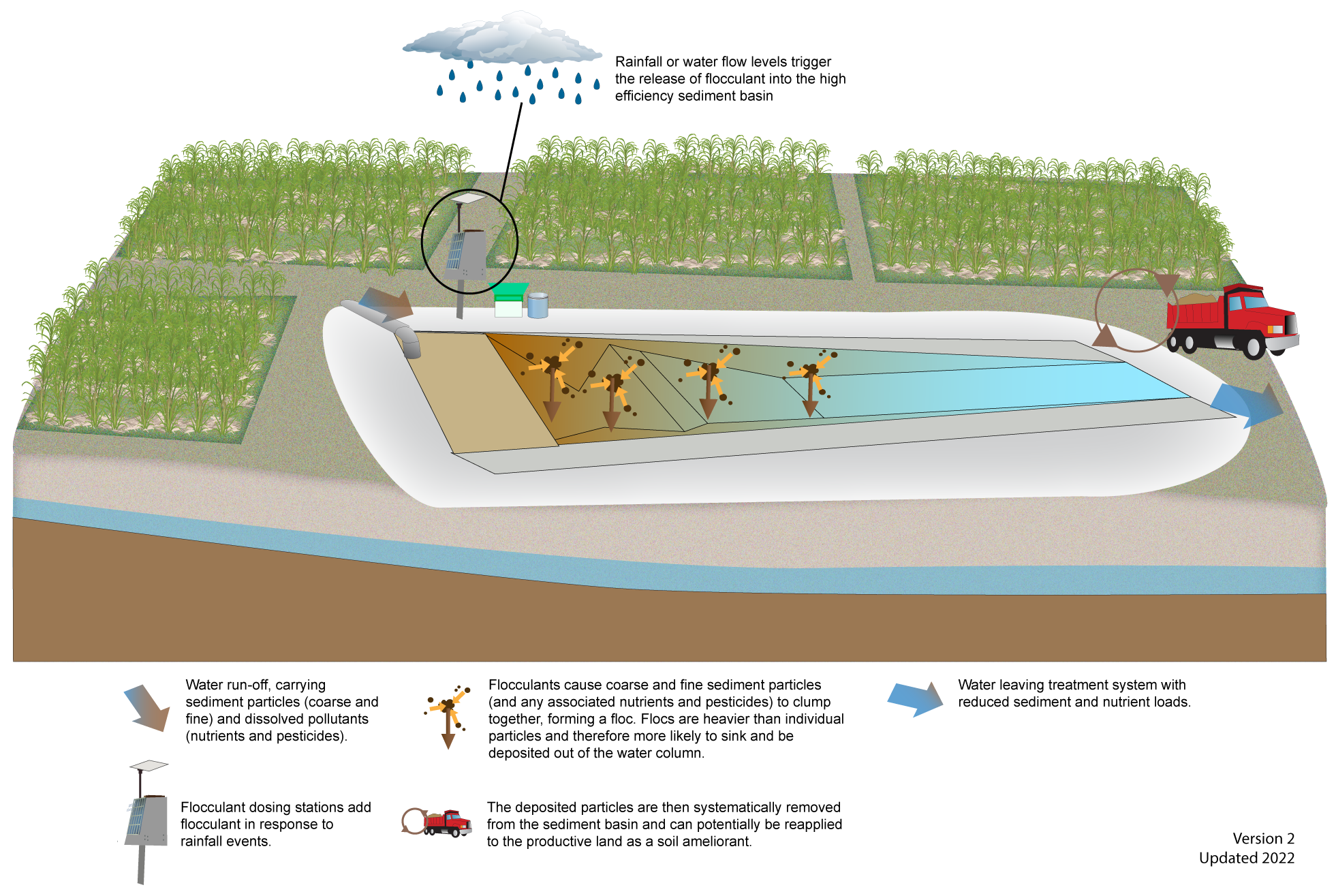|
|
High efficiency sediment basinsHigh efficiency sediment basins — Planning and designSelect from the tabs below SizingThe HES basin needs to be large enough to allow for a 1 hour residence time. The dimensions of the recycle pit will need to be tailored to the site[1]. Conversion of rainfall figures to run-off volumes may require expert input and/or hydrological modelling to ensure the HES basin is sized appropriately[2] Footprint 2-3% of contributing catchment Site selectionHES basins need to be located in a suitable part of the farm, connected to the drainage network so that it can receive runoff from an appropriate area of the farm.
Design requirements
DisclaimerIn addition to the standard disclaimer located at the bottom of the page, please note the content presented is based on published knowledge of treatment systems. Many of the treatment systems described have not been trialled in different regions or land uses in Queensland. The information will be updated as new trials are conducted and monitored. If you have any additional information on treatment systems or suggestions for additional technologies please contact us using the feedback link at the bottom of this page. References
Last updated: 10 June 2022 This page should be cited as: Department of Environment, Science and Innovation, Queensland (2022) High efficiency sediment basins — Planning and design, WetlandInfo website, accessed 8 May 2025. Available at: https://wetlandinfo.des.qld.gov.au/wetlands/management/treatment-systems/for-agriculture/treatment-sys-nav-page/high-efficiency-sediment-basins/planning-design.html |

 — Department of the Environment, Tourism, Science and Innovation
— Department of the Environment, Tourism, Science and Innovation


